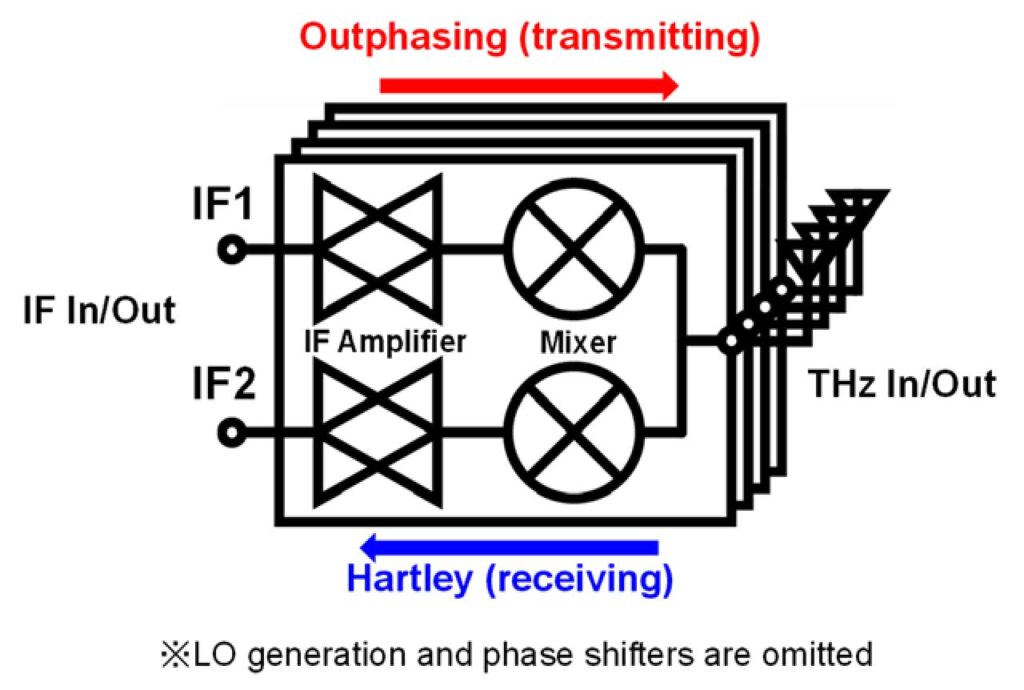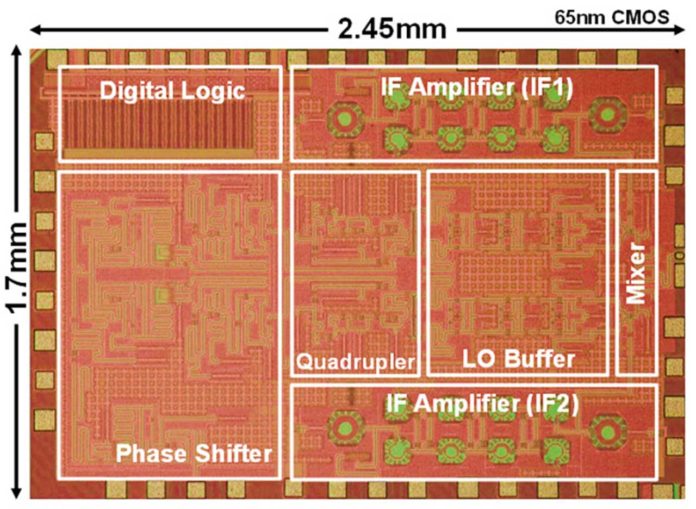Communication at higher frequencies is a ceaselessly sought-after goal in electronics due to the more excellent data rates that would be conceivable and to take advantage of the electromagnetic spectrum. Numerous applications beyond 5G, and IEEE802.15.3d standard for wireless communications, call for transmitters and receivers equipped for working near or over 300 GHz.
To address these issues, a team of scientists from Tokyo Tech collaborated with NTT and proposed an innovative design for a 300 GHz CMOS-based transceiver. Their transceiver’s design addresses operating CMOS technology’s challenges at its practical limit and represents the first wideband CMOS phased-array system to operate at such elevated frequencies.
One key feature of the proposed design: it is bidirectional. A significant portion of the circuit, including the blender, antennas, and local oscillator, is divided among the receiver and the transmitter. This implies the general circuit complexity and the total circuit area required are a lot lower than in unidirectional implementations.
Using four antennas in a phased array configuration is yet another aspect. Existing solutions for 300 GHz CMOS transmitters use a single radiating element. This limits the antenna gain and the system’s output power. An additional advantage is the beamforming capability of phased arrays, which allows the device to adjust the antenna signals’ relative phases to create a combined radiation pattern with custom directionality. The antennas used are stacked “Vivaldi antennas,” which can be etched directly onto PCBs, making them easy to fabricate.
The proposed transceiver uses a subharmonic mixer compatible with a bidirectional operation. It requires a local oscillator with a comparatively lower frequency. However, this type of mixing results in low output power, which led the team to resort to an old yet functional technique to boost it.

Professor Kenichi Okada from Tokyo Tech, who led the study, explains: “Outphasing is a method generally used to improve the efficiency of power amplifiers by enabling their operation at output powers close to the point where they no longer behave linearly–that is, without distortion. In our work, we used this approach to increase the transmitted output power by operating the mixers at their saturated output power.”
“The entire transceiver was implemented in an area as small as 4.17 mm2. It achieved maximum rates of 26 Gbaud for transmission and 18 Gbaud for reception, outclassing most state-of-the-art solutions. Excited about the results.”
“Our work demonstrates the first implementation of a wideband CMOS phased-array system that operates at frequencies higher than 200 GHz.” Let us hope this study helps us squeeze more juice out of CMOS technology for upcoming applications in wireless communications!.”
